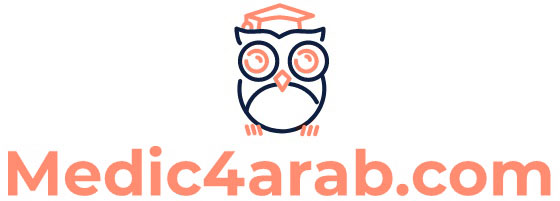Pediatric Telephone Advice
| Inside this handy on-the-spot guide, you'll find the step-by-step protocols needed for effective telephone triage of common pediatric symptoms. Presented logically in algorithmic format, each protocol lists the questions to ask callers when evaluating the urgency of their problem, and shows you how to differentiate cases requiring emergency intervention from those better addressed through an office visit or home care. You'll also find first-aid and home care instructions for parents and tips on alerting parents to potential complications warranting a call back. In telephone triage, accuracy counts...be sure you ask the right questions. Logical organization takes you from the basics of telephone triage to specific guidance on handling medical emergencies, trauma, newborn or infant issues, and symptoms of both mild and severe illness. Detailed protocols show you what questions to ask callers, helping you elicit the clinically essential information needed to make an accurate and rapid assessment. Thoroughly updated content assures you of the most current and accurate telephone triage advice. Spiral-bound format ensures you never lose your place—perfect for on-the-spot consultation. Let this resource help you... Prevent delayed recognition of potentially emergent pediatric conditions. Help callers avoid the inconvenience and expense of unneeded office visits. Guide callers in the use of home remedies and non-prescription drugs for non-emergency cases. The call comes in—a child is in medical distress...Get the telephone triage advice you need to make a quick and accurate assessment. Order your copy of Pediatric Telephone Advice, Third Edition today! | |||
Table of contents : Content: ""Cover"" ""Copyright"" ""Dedication"" ""Author"" ""Preface"" ""Acknowledgments"" ""Contents"" ""Part One Telephone Management"" ""1.1 How to Use This Book"" ""1.2 Telephone Triage and Advice: How to Delegate in Office Practice"" ""1.3 Medications by Telephone: Prescription and Nonprescription"" ""1.4 Telephone Equipment"" ""1.5 Components of Effective Telephone Encounters"" ""1.6 How to Use the Telephone Protocols for Training Nurses and Physicians"" ""Part Two Emergency Calls"" ""2.1 Anaphylaxis (Severe Allergic Reaction)"" ""2.2 Choking"" ""2.3 Confusion (Delirium)"" ""2.4 Fainting""""2.5 Poisoning (Ingestion)"" ""2.6 Respiratory Distress (Breathing Difficulty, Severe)"" ""2.7 Seizure with Fever (Febrile Seizure)"" ""2.8 Seizure Without Fever"" ""Part Three Trauma (Injury) Calls"" ""3.1 Bone, Muscle, Joint, and Ligament Trauma"" ""3.2 Ear Trauma"" ""3.3 Eye Trauma"" ""3.4 Finger and Toe Trauma"" ""3.5 Genital Trauma"" ""3.6 Head Trauma"" ""3.7 Mouth Trauma"" ""3.8 Nose Trauma"" ""3.9 Skin Trauma (Cuts, Scrapes, and Bruises)"" ""3.10 Puncture Wound"" ""3.11 Tooth Trauma"" ""Part Four Newborn and Infant Calls"" ""4.1 Bottle (Formula)-Feeding Questions""""4.2 Breast-Feeding Questions"" ""4.3 Crying Baby Younger Than 3 Months"" ""4.4 Crying Child Older Than 3 Months"" ""4.5 Diaper Rash"" ""4.6 Jaundiced Newborn"" ""4.7 Newborn Appearance"" ""4.8 Newborn Rashes and Birthmarks"" ""4.9 Spitting Up (Reflux)"" ""4.10 Thrush"" ""4.11 Umbilical Cord Symptoms"" ""Part Five Symptom or Disease Calls"" ""5.1 Abdominal Pain"" ""5.2 Asthma Attack"" ""5.3 Athlete's Foot"" ""5.4 Bee or Wasp Sting"" ""5.5 Bite, Animal or Human"" ""5.6 Bite, Insect"" ""5.7 Bite, Spider"" ""5.8 Bite, Tick"" ""5.9 Breath-Holding Spell""""5.10 Burn"" ""5.11 Chest Pain"" ""5.12 Chickenpox (Varicella)"" ""5.13 Cold"" ""5.14 Constipation"" ""5.15 Cough"" ""5.16 Croup"" ""5.17 Diarrhea"" ""5.18 Earache"" ""5.19 Ear Congestion"" ""5.20 Ear Discharge"" ""5.21 Ear, Pulling at or Itchy"" ""5.22 Ear, Swimmer's (Otitis Externa)"" ""5.23 Eye Allergy"" ""5.24 Eye, Chemical In"" ""5.25 Eye, Foreign Body"" ""5.26 Eye, Red (Without Pus)"" ""5.27 Eye, With Pus"" ""5.28 Fever"" ""5.29 Fifth Disease (Erythema Infectiosum)"" ""5.30 Fluid Intake, Decreased"" ""5.31 Groin or Scrotum Swelling/PAIN""""5.32 Hand-Foot-And-Mouth Disease"" ""5.33 Hay Fever (Allergic Rhinitis)"" ""5.34 Headache"" ""5.35 Hives (Urticaria)"" ""5.36 Immunizations: Recommended Schedule"" ""5.37 Immunization Reactions"" ""5.38 Impetigo"" ""5.39 Infection Exposure"" ""5.40 Lice (Pediculosis)"" ""5.41 Limb Pain"" ""5.42 Lymph Nodes, Swollen"" ""5.43 Menstrual Cramps (Dysmenorrhea)"" ""5.44 Mouth Ulcers"" ""5.45 Nosebleed"" ""5.46 Pinworms"" ""5.47 Poison Ivy, Oak, or Sumac"" ""5.48 Rash, Localized and Cause Unknown"" ""5.49 Rash, Widespread and Cause Unknown"" |
















